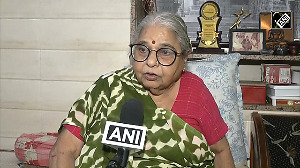It was the summer of 2006 (May 18). Writers’ Building, then the state secretariat, was buzzing with journalists.

The event marked the start of Buddhadeb Bhattacharjee’s second term as chief minister.
And in style, it got off with West Bengal bagging the small car plant, Nano.
Ratan Tata, then Tata Group chairman, had flown in along with the brass to make the announcement.
The Nano found its home at Singur in the Hooghly district.
A second project by Telcon, a 60:40 joint venture (JV) of Tata Motors and Japan’s Hitachi Construction Machinery, to manufacture earth-moving equipment was announced the same day.
It was to come up at Kharagpur in Paschim Medinipur.
In the months to come, the small car project pitched to revolutionise mobility eclipsed its twin for more reasons than one.
But 18 years on, it’s the humble project that has turned out to be a sunny farm-to-industry story.
The Kharagpur plant of Tata Hitachi sits on a 250-acre land parcel in the West Bengal government’s Vidyasagar Industrial Park.
The lease agreement with the West Bengal Industrial Development Corporation (WBIDC), a nodal agency of the West Bengal government for promoting industrialisation, was signed in 2007.
For the landgivers, the journey from farm workers to factory workers started sometime later.
About 60 per cent of the workforce are landgivers, with one member from each displaced family employed.
The total workforce at the Kharagpur plant is more than 2,100, including contract employees.
From training at nearby industrial training institutes to on-the-job skilling by experts from Hitachi, the farm workers have traversed the ground in the past six years.
Some of them made their way to Japan, trained as skill experts, and have come back.
“We took them to Jamshedpur and Dharwad plants and gave them long-term skill-building training.
"But what made a difference is the handholding by Japanese expats, who are experts in assembly, welding, painting, etc,” Tata Hitachi’s senior vice-president Anand said.
Hitachi has an international skill competition in which subsidiaries from across the world compete.
The best of the Kharagpur lot was put among the world’s best.
“They competed and came out at the top — that gave them a lot of confidence,” Anand added.
According to Arup Mukherjee, vice-president of quality and design at Tata Hitachi, this is a case study.
“These people, who started with zero skill and were farmers, are winning global awards. That is the transition.”
The Kharagpur plant is one of the largest excavator plants in Southeast Asia. In 2019, the construction equipment manufacturer’s Jamshedpur operations also moved here.
Industrial relations at the plant have been smooth, and a large part of that can be attributed to the special connection that the landgiver-turned-factory workers have with the project.
Tata Hitachi is the anchor tenant in Vidyasagar Industrial Park, the ownership of which rests with WBIDC.
It is spread over roughly 1,166.64 acres. About 18 units, including Tata Hitachi, have set up shop here. Sources in the government said that the land was acquired through the Land Acquisition Act, 1894.
Ironically, about 3.5 hours from the area, the acquisition of the Nano at Singur ran into indefinite agitation by a section of land losers.
Their protest against forcible land acquisition was supported by Mamata Banerjee, then in Opposition.
On October 3, 2008, Tata Motors pulled the plug on Singur, and the Nano project relocated to Sanand, Gujarat.
The plant at Singur was 80 per cent ready then.
Thirteen vendors had also finished constructing their plants, and 17 others were at various stages of construction.
For Bengal politics, the event marked a turning point.
In the state election that followed in 2011, the Left Front government was decimated by the Trinamool Congress.
The land for the project at Singur has since been returned to the land losers — willing and unwilling — according to a Supreme Court order.
In Singur, there are two camps: willing and unwilling.
The land losers who willingly gave up their plot for the project and took the compensation cheque from the Left Front government are labelled ‘willing’.
About 20 per cent of total land losers protested the land acquisition, refused to take compensation, and became ‘unwilling’ land losers.
Cut to 2024.
A large swathe of 997 acres along the national highway stands as a symbol of dashed hopes — neither agriculture nor industry have flourished here.











